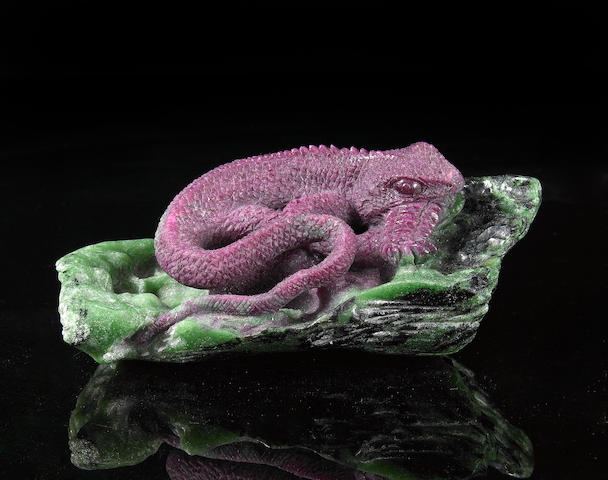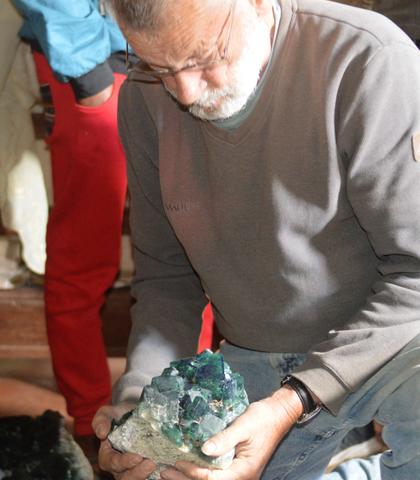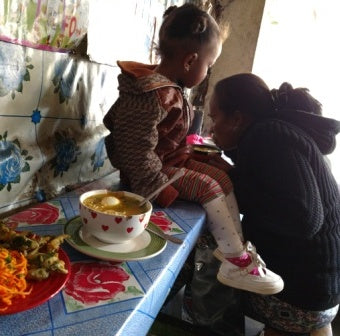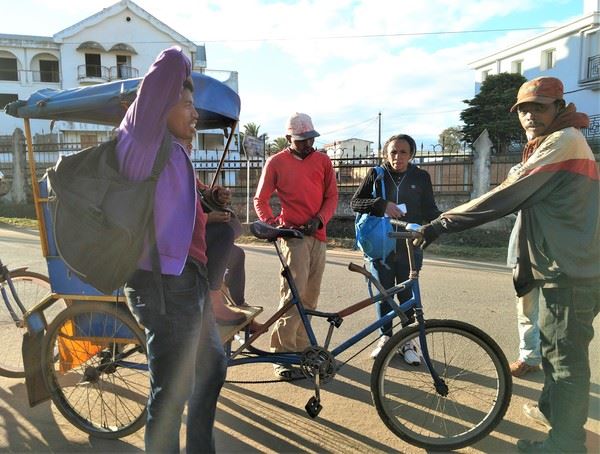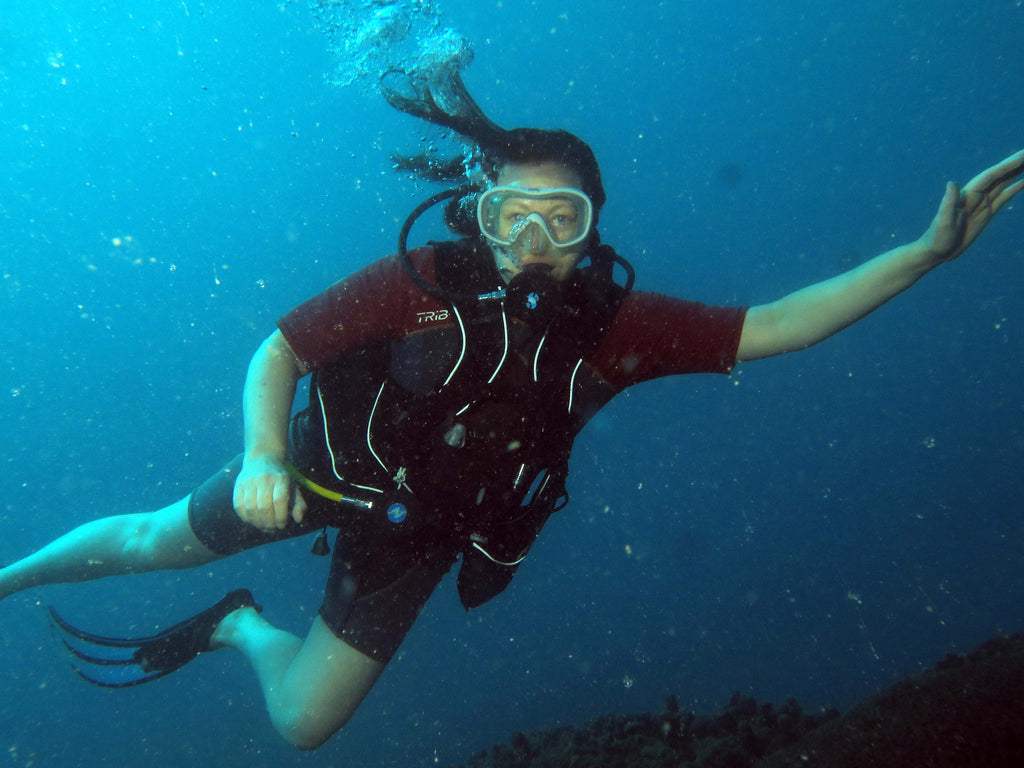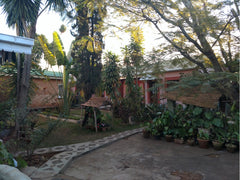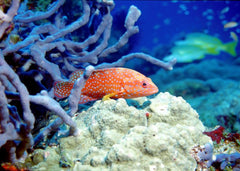Gem Buying in Tanzania: Rubies Rubies Rubies
As promised, let me tell you about the gems I saw, or didn't see, in Tanzania: on my second day, I spent rather a lot of time inside the little gem and jewelry shop owned by one of the few Tanzania retailers, a Greek immigrant named "Reno", born in Kenya. The shop is right inside the Mount Meru hotel. After sipping some excellent Greek coffee in his office and discussing current politics and Trade issues with Reno, his daughter Despina showed me their entire stock, where I was allowed to pick at wholesale prices.
As you know, I am by now more seasoned at buying gems, and I no longer jump at anything unusual at first sight. Nevertheless, the old ruby stock Reno had in his trays peaqued my interest. There were mainly cabochons, but also several faceted pieces that I loved. The cabochons were certified unheated by Despina's lab in Arusha, and so were the faceted gems. By the time this blog entry appears, I have already had AGL recertify two of the cabochons, and I am waiting on the rest. Getting (certified) unheated ruby material these days is tough going, and the Kenya material that I got is pretty rare.
John Saul Ruby
In General, from what Reno told me, not many people right now are acquiring new stock, Reno included. But that makes it equally interesting. I saw a few super strongly saturated Mandarin garnets, of which I bought two (one is since sold), but I passed on unheated pink and purple Tanzanite. All of it is also older material, and maybe I should have bought it, but I thought the ruby was still more unusual. I also sourced a small parcel of unheated sapphires, a peach colored one as well as purples and a pink purple, all of which have the liner silk so typical of material from the Mozambique belt (most likely they are from Garba Tula Kenya). I also got a pair of Mahenge spinel that is super saturated that I am quite happy with. My export was facilitated via Bimal, the uncle of Jaimeen Shaw, owner of Prima Gems USA. Bimal had us over for some amazing Cardamon tea and cookies, he still ships a lot to the US but only larger goods, not gemstone melee. And he stocks almost nothing. Like everyone else, he's waiting for the situation to either improve or fall apart entirely.
Kenya Sapphire
Faceted Ruby
While selecting my gems, I chatted with Despina, who provided another perspective on life in Tanzania. Born in Kenya to Reno and his Greek wife whose name I don’t know, she led a childhood of luxury for Africa. She went to a Greek school, got a college education, and speaks fluent Swahili, English and Greek. But she never felt like Africa was her home. Despina hopes to go back to Greece where she spent almost two decades of her adult life. Back in Tanzania now for 4 years, she says she would leave tomorrow, “as I am” she said. Just with the clothes on her back and her little 8 year old daughter Emma. “I want to live somewhere where my windows do not have to have bars, she said.” “Where I can go anywhere, and just walk, not have to drive, not have to worry about security.” And Kenya is now worse than Tanzania she said, especially Nairobi. It used to be the other way around when she was young. She feels European, not African, and of course Greece is one of the most beautiful places on earth, so I couldn't blame her. And as much as I enjoy the visits, I could not live in Tanzania either. The “rich” (consider it the upper middle class in the US and Europe), live in protected compounds, and white people have difficulty moving about freely because they stand a higher chance of being robbed. They belong to no tribe and thus have no tribal protection. I look at Tanzania and I see the United States' future, hopefully a far away future, where there is virtually no real middle class, just poor, very poor and well off, with the latter being the top of the pyramid and in need of protection because of the scarcity of resources. Some day we will have scarcity of resources as well, if we keep multiplying as we have. The middle class is already getting squeezed and I do not forsee it getting better. But I digress….
Ruby Zoisite and Expedition to Longido
On our second day in Arusha, we focused on ruby, in particular, ruby in zoisite, not for cutting but for carving. Jochen had a request from a German buyer for several hundred kilograms so he had to see what’s around and make a deal for material to be held here until hopefully the export of specimen rough including this ruby zoisite will resume. He had one offer from one of the Master Dealers - Tony Frisby, aka the “doctor” because he has a Ph.D. to look at something at Tony’s property. Tony, a white Kenyan in his 60s with short shaven hair and a mumble, has been dealing in Tanzania for decades. We took a cab to hi son's house in Arusha to look at large lumps of ruby in a huge pile in the yard. Tony now resides in Arusha downtown with his “young wife” as he explained – this is his 9th one. Tony converted to Muslim so he could marry more than one. He’s divorced from some, not others. Interesting character.

Jochen got a pretty low price for the ruby – possibly because of the export problems. But he decided to pursue one more lead in Mundarara (not far away from the town of Longido) about an hour north-west of Arusha. So we headed there, we were driven by one of the guys interested in making the deal. I found that in Tanzania it was often very unclear who actually owns the material or who is negotiating for it (or if more than one person owns stuff).
Longido Region



Mundarara

We turned off the tarmac road (the paved road) just past Longido onto a dirt road which we followed for about another hour (25 miles or so) to the actual place where the ruby zoisite was mined – Mundarara. Jochen noticed that in the years since he’s last been here, there had been a lot of change for the better: a lot of nicer houses had been built – brick houses with actual roofs, larger in size – and the mining area itself was closed off properly. There were a lot of new buildings and many of the original huts were empty. Of course it was still on an unpaved dirt road and from our perspective it looked extremely poor, but it wasn't what it was for the people a few years ago. So the money that was made from selling the ruby was actually going back to the town itself which was extremely nice to see! Anything and everything was being sifted through, old pits close and new ones open at a high pace.

For Jochen to make a transaction with anyone here, we first had to make ourselves known to the person in charge, possibly the chief of the area. We drove to the end of town and Moustache our broker, a Masai who was well known among the locals for his connections to dealers in Arusha, figured out who we need to clear our presence with. As we waited, consuming copious bananas and fresh pineapple, several people pointed at my cell phone to be photographed. I did that not realizing they were hoping for money. Duh. I had no Tanzanian shillings on me so I couldn’t pay but the issue wasn’t pressed. This was a good thing. I felt kind of guilty. Generally though we were asked not to take photos until we talked to the person in charge. The mining areas are fiercely protected. I took some secret video though with my cell phone.

After some time, possibly close to an hour, of waiting around, a guy appeared, shook hands with us and said everything was all good and we could proceed. So we went to a property where the ruby was piled up (imagine a construction site about 30x10 feet) and Jochen stomped around on it looking at various pieces. He decided it was good enough and so negotiations could commence. No actual trade was facilitated at the time however.


